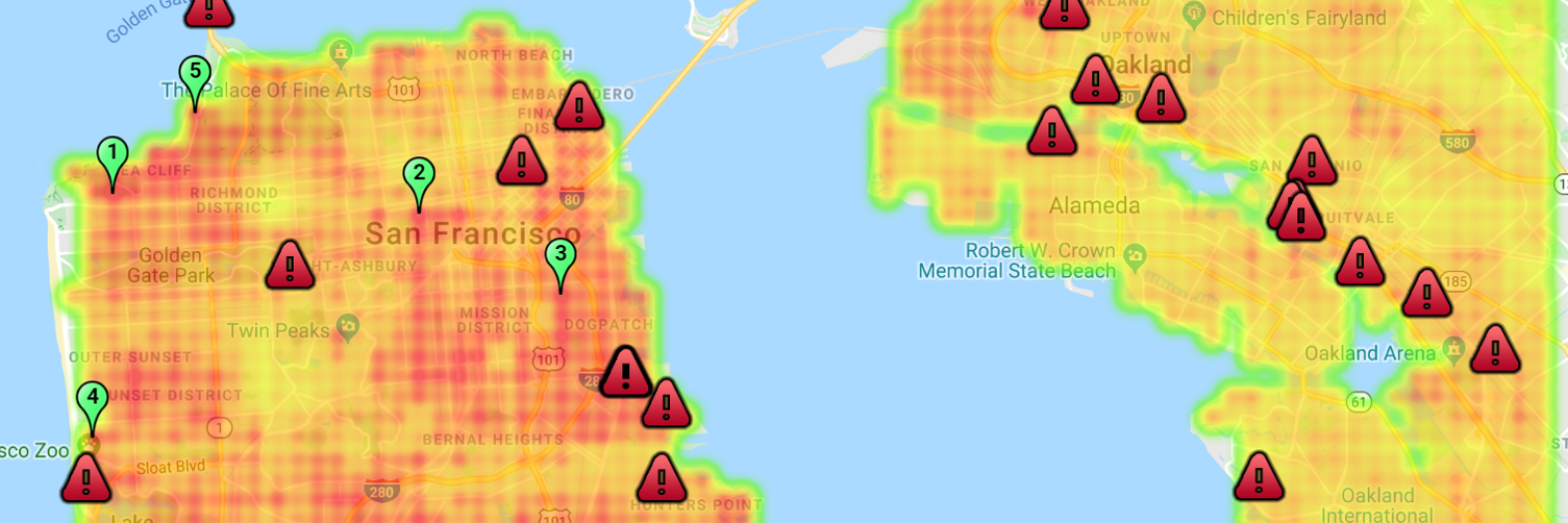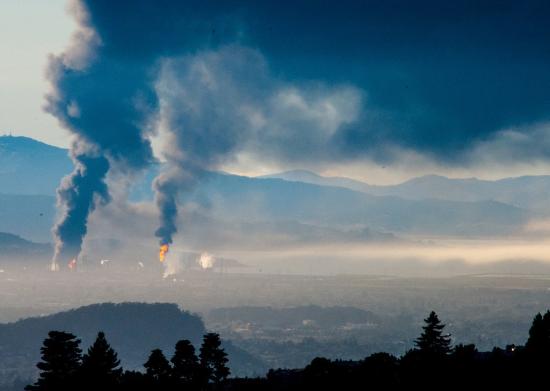FairAir: Filling the gaps in air pollution monitoring
Air pollution cuts short 4 million lives every year. Neighborhoods with the most pollution are also the neighborhoods where air quality is monitored the least.
Government air quality sensors are purposely deployed far from pollution sources in order to measure ambient levels. Home sensors such as PurpleAir devices are mostly placed in wealthier neighborhoods — but it’s poorer areas that often experience the worst air. This is slowly starting to change. Environmental foundations and even the state of California are beginning to fund local activist groups to place low-cost home sensors in blindspot areas. However, these small groups often don’t know where to put them.
Using dynamic and static features, plus readings from existing Purple Air sensors, a random forest-based model creates “virtual sensors” with hourly predictions at a resolution of 500 meters. FairAir predicts which areas with sparse sensor coverage have the worst air pollution and recommends the best place to put new sensors. Optimal placement of sensors ensures disadvantaged communities have access to air quality data, improves air quality models for everyone, and saves money from being wasted on redundant sensors.











